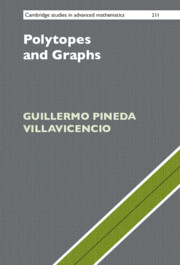2 - Polytopes
Published online by Cambridge University Press: 14 March 2024
Summary
Convex polytopes can be equivalently defined as bounded intersections of finitely many halfspaces in some $\R^{d}$ and as convex hulls of finitely many points in $\R^{d}$.A halfspace is defined by a linear inequality, and each nonempty closed convex set in $\R^{d}$ is the set of solutions of a system of possibly infinite linear inequalities.If we have a finite number of inequalities, the set is a \textit{polyhedron}.Polyhedra are therefore generalisations of polytopes and polyhedral cones. Many assertions in this chapter, such as the facial structure of polytopes, are derived from analogous assertions about polyhedra. We learn how to preprocess objects via projective transformations to simplify the solution of a problem. We then discuss common examples of polytopes. For the visualisation of low-dimensional polytopes, we study Schlegel diagrams, a special type of polytopal complex. We will also examine common results in polytope theory such as the Euler--Poincar\’e--Schl\"afli equation, and a theorem of Bruggesser and Mani (1971) on the existence of shelling orders.The chapter ends with Gale transforms, a useful device to study polytopes with small number of vertices.
Keywords
- Type
- Chapter
- Information
- Polytopes and Graphs , pp. 44 - 154Publisher: Cambridge University PressPrint publication year: 2024

